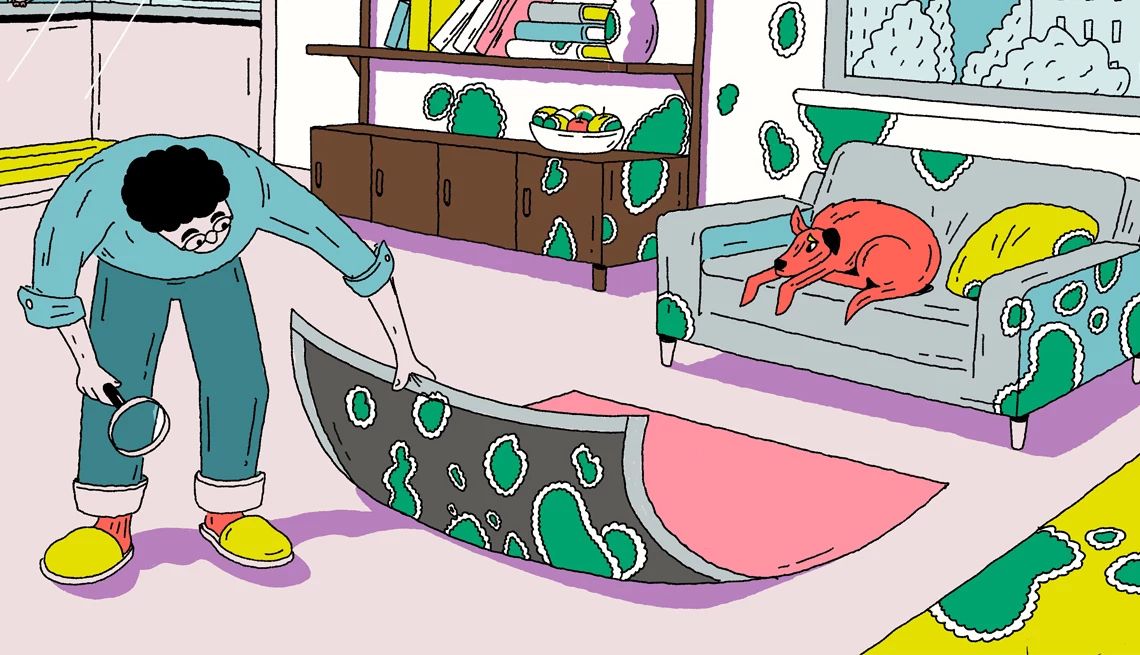
6 places mold can hide in your home — and how to get rid of it
- Select a language for the TTS:
- UK English Female
- UK English Male
- US English Female
- US English Male
- Australian Female
- Australian Male
- Language selected: (auto detect) - EN
Play all audios:

GROWING ON CLOTHING Another out-of-sight spot for mold to grow is on the clothes in your closet — particularly if you have a tightly packed closet with poor air circulation. Mold grows best
in closets when humidity levels rise above 70 percent, Leviton says, and natural materials, including wool and cotton, are more prone than others. Should you just throw moldy clothes in the
wash? Leviton says his cleaning recommendations for household items harboring mold can vary greatly since some people are very sensitive to mold and others are not. If he was dealing with a
slightly moldy piece of clothing, Leviton says, he would “put it in a washing machine with some vinegar” to see if that got rid of visible mold. Saar, on the other hand, recommends taking
slightly moldy clothing to a dry cleaner. Note that simply trying to clean moldy clothing is “totally not enough” for people who are highly sensitive to mold, Leviton says. They might
consider just throwing the clothes away. To get rid of airborne mold spores after you remove the clothing, Leviton suggests running a high-efficiency particulate air (HEPA) filter —
especially since anytime you handle something with mold on it, you’re effectively “disturbing it” and sending spores into the air. The Centers for Disease Control and Prevention says
humidity should not go over 50 percent. A dehumidifier might help keep mold at bay and allow the air in your home to flow freely, the CDC says. LIVING ON THE BACKS OF FURNITURE Mold on
furniture can be exceptionally tricky to spot when it occurs on the backside of an item. “For furniture, it tends to be on that particle-board backing on like Ikea furniture,” Leviton says.
“So that’ll be like side tables or behind headboards a lot of times.” Because that type of material is porous, it can be very hard to effectively clean — you don’t have the option of
submerging it in a cleaning solution or throwing it in the washing machine. “When it comes to the backing of furniture, usually I would replace [the furniture] if possible,” Leviton says.
“Usually, you can clean it, but the mold will stay in the porous material.” THE MOLD MONSTER UNDER YOUR BED You might have checked for monsters under the bed as a kid; now it might be time
to check for mold. Leviton says keeping your mattress on the floor puts your bed at the highest risk of mold growth: “If condensation does happen, then it’s kind of got this nice little
petri dish that’s been created by the floor and the mattress. So it’s better to have it off the floor so that air can circulate.” And frankly, Leviton says, if you do find mold, it’s
probably time for a new mattress. He says you could try to clean it but that would be extremely cumbersome and pretty much impossible to completely rid it of mold. “I don’t know how you
would get all of the mold because it would grow inward, and you can’t really get deep enough, I don’t think, with cleaning unless you were able to submerge it in something like vinegar,” he
says. “But I don’t know if there’s a way to because it’s such a large object.” If your mattress is raised off the ground and mold-free, it is still possible for mold to grow under your bed.
“I’ve seen it on the wooden slats under the mattresses before because if the bed is up against the wooden slat, then it creates kind of like a little mini-environment where moisture can just
kind of sit,” Leviton says. If you find mold growing on the slats, Leviton says cleaning them could be effective if the wood is sealed. If it’s not, he says to replace them since the mold
has likely “grown into the pores,” which makes them impossible to fully clean. He adds there are products on the market such as encapsulating paint meant to trap the mold into the wood, but
they are not guaranteed to work.
